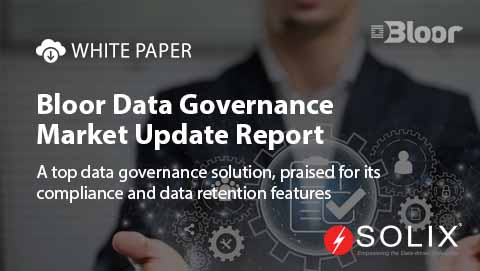Data Catalog Optimization The Key to Unlocking Your Datas Full Potential
If youre on a quest to enhance your organizations data management practices, you might be wondering how to achieve effective data catalog optimizationAt its core, data catalog optimization is about ensuring that the data you collect, store, and utilize is easily accessible, understandable, and valuable for decision-making. This blog will walk you through the essentials of data catalog optimization, sharing insights and practical recommendations based on real-world experiences.
Imagine youre a data analyst tasked with generating insights for strategic initiatives, but the data you need is buried in a maze of spreadsheets, databases, and unorganized files. This scenario can be frustrating and time-consuming. Thats where data catalog optimization comes into play. By implementing effective strategies for optimizing your data catalog, you can transform your data landscape, streamline your access to information, and ultimately drive better business outcomes.
Understanding Data Catalog Optimization
Data catalog optimization revolves around enhancing the discoverability, usability, and governance of your data. A well-optimized data catalog helps organizations manage vast amounts of information effectively, enabling them to derive actionable insights promptly. So, how do you achieve this optimization Lets dive into a few key strategies that can make a marked difference.
1. Prioritize Metadata Quality
One of the most crucial aspects of data catalog optimization is managing your metadata. High-quality metadata acts as a roadmap that guides users in finding the data they need. It should include comprehensive descriptions, data lineage, and relevant tags to enhance interpretability. In my experience, investing time in curating metadata can substantially reduce the time spent searching for data. Ive seen organizations transition from spending hours sifting through datasets to finding relevant information in minutesthanks to properly structured metadata.
2. Foster Collaboration Across Departments
Data silos can hinder the effectiveness of your data catalog. To optimize your data catalog for better data accessibility and understanding, encourage collaboration among different departments. In one case, I worked with a marketing team that struggled to connect their insights with sales data. By creating cross-functional teams and encouraging open dialogue, we were able to integrate various data sources into a unified catalog, enhancing collaboration and fostering a culture of data literacy across the organization.
3. Implement User-Friendly Interfaces
No matter how well-structured your data catalog is, if its challenging to navigate, users will get frustrated and look elsewhere. A user-friendly interface is vital for successful data catalog optimization. Consider implementing intuitive search features, filtering options, and easy-to-read visuals. This approach empowers users to find the data they need without unnecessary hurdles, which ultimately enhances engagement with your data catalog.
4. Regularly Review and Update Data
Data is not static; it constantly evolves. Thats why its essential to regularly review and update the contents of your data catalog. I once worked with an organization that had a wealth of outdated data in their catalog, making it hard for users to trust the available resources. By setting up a regular review process and purging obsolete data, we regained users trust, and satisfaction significantly improved. Additionally, consider engaging your data users in this process; their input can be invaluable in determining which datasets remain relevant.
5. Utilize Advanced Tools and Technologies
To truly harness the power of data catalog optimization, consider leveraging advanced tools and technologies designed for this purpose. For instance, platforms like the Solix Data Catalog provide functionalities that help in data discovery, lineage tracking, and metadata management. By adopting comprehensive tools like Solix offerings, organizations can significantly enhance their data management capabilities, simplifying the entire process of optimizing their data catalogs.
The Role of Solix in Data Catalog Optimization
Solix offers specialized solutions that cater to the needs of organizations looking to improve their data catalog practices. Their tools provide robust metadata management capabilities, allowing businesses to cultivate a responsive and user-focused data catalog. For anyone serious about data catalog optimization, exploring Solix solutions can provide significant advantages in managing their data landscapes.
Actionable Recommendations for Getting Started
Now that weve covered the importance of data catalog optimization, here are a few actionable recommendations to get you started
1. Assess Your Current Catalog Start by evaluating your existing data catalogs structure and usage. Are users able to find information efficiently What feedback do they have
2. Engage Stakeholders Involve team members across departments in discussions about what data they need and how they use it. Their insights can guide your optimization efforts.
3. Invest in Tools Explore tools like the Solix Data Catalog to enhance your metadata management, data discovery, and overall efficiency.
4. Establish Governance Policies Develop and implement data governance policies to ensure data quality and compliance continuously. This foundational work is crucial for sustaining your optimization efforts.
Connecting with Solix for Further Support
If youre looking to maximize your organizations data capabilities through data catalog optimization, I encourage you to reach out to Solix. Their team of experts can provide tailored solutions to help you harness the power of your data effectively. You can contact them at 1.888.GO.SOLIX (1-888-467-6549) or visit their contact page for more information.
Wrap-Up
Optimizing your data catalog is crucial for unlocking the full potential of your data assets. By focusing on metadata quality, fostering collaboration, simplifying interfaces, regularly updating data, and utilizing advanced tools, you can significantly enhance your organizations data practices. Remember, effective data catalog optimization is not just a technical exerciseits about creating a culture of data empowerment within your organization. And with the right approach, you can transform your data into actionable insights that drive growth and innovation.
Author Bio Elva is a data consultant with years of experience in data catalog optimization and data management best practices. She enjoys helping organizations leverage their data for actionable insights and strategic decision-making.
Disclaimer The views expressed in this blog are Elvas own and do not reflect the official position of Solix.
Sign up now on the right for a chance to WIN $100 today! Our giveaway ends soon‚ dont miss out! Limited time offer! Enter on right to claim your $100 reward before its too late!
-

-

-
 On-Demand Webinar
On-Demand WebinarThe Power of Less: How Data Minimization Drives Data Privacy Compliance
Watch On-Demand Webinar
